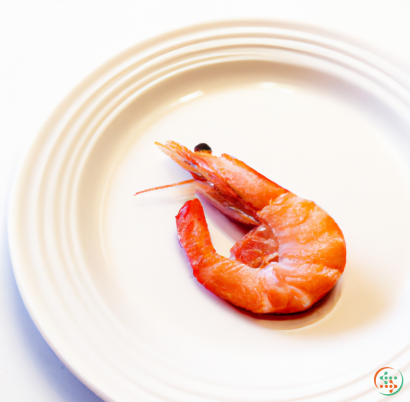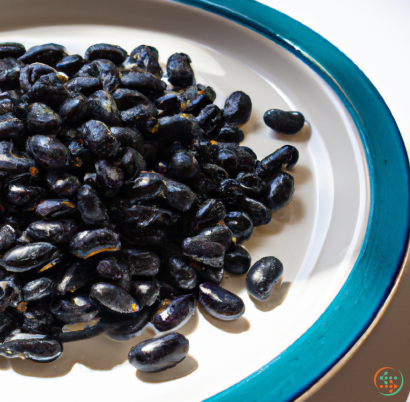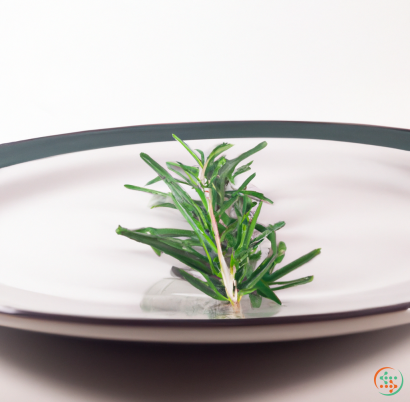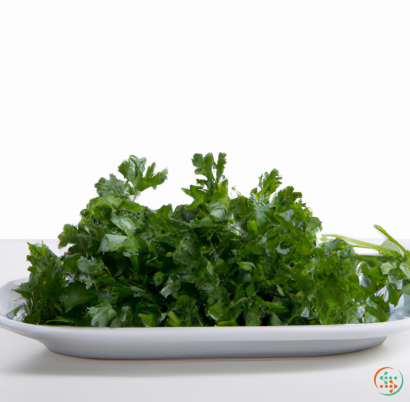Squid
Squid aren’t just the adorable cephalopods you may think of when you imagine a sea creature. They are actually one of the many varieties of organisms living in the ocean, and they’re actually surprisingly impressive and fascinating creatures. Here’s what they’re all about.
Squid are cephalopods, which is a group of mollusks (invertebrates) that includes octopuses, cuttlefish, and squid. They are found throughout the world’s oceans, situated in virtually every part of the ocean. They live in shallow water, and can also be found in deeper waters near mountainous coasts and coral reefs.
Squid vary in size significantly. Most squids measure between 5 and 10 inches in length, but the largest, a colossal squid, can be up to an impressive 46 feet long. This makes the colossal squid the biggest invertebrate in the world.
Squid have some distinguishing characteristics that make them quite unique. One of the most important is their nervous system. They don’t have a backbone, so their nervous system is distributed throughout their body. This gives them a level of control over their bodies that other animals don’t have, allowing them to make swift adjustments to their environment. Their original nervous system helps them respond quickly to threats.
Squid also have a very interesting anatomy. They have eight arms, two of which are longer than the rest and can be used to grab food. They also have two tentacles, which are typically much longer than the arms. They are incredibly agile swimmers, and can propel themselves through the water powered by jets of water.
Squid have some unique organs that help them survive in the ocean. One of these is the chromatophores, which are special pigment cells that allow the squid to change color. This allows them to blend in with their environment, making them less likely to be detected by predators. They also have jetting organs, which allow them to jet away from predators with bursts of speed.
Another one of the squid’s most interesting features is their eyes. A squid’s eyes are very large and complex, as they need to be in order to survive in the ocean. They can see in both infrared and ultraviolet light. This allows them to hunt prey and avoid predators.
Squid are an important part of the marine ecosystem. They are predators, feeding mainly on smaller fishes and other small invertebrates like shrimp and crabs. They’re also a crucial food source for larger predators, including whales and birds.
Despite their fascinating characteristics, not much is known about the lives of squid. Much of the research that has been carried out has been focused on their habitats, the threats they face, and their role in the marine ecosystem.
In conclusion, squid are fascinating creatures with unique anatomy and capabilities. They’re important predators in the ocean and have adapted to live in some of the most challenging environments imaginable. Despite this, not much is known about their lives, but it’s clear that they play an important role in the ocean and should be protected for the sake of their surviving population.
Squids: From the Depths of the Ocean to Your Dinner Plate
It's 4 p.m. and you’re getting dinner ready for the family. You open the fridge and take out the package of squids you bought earlier. You put it in the pot, turn up the heat, add a few herbs and spices, and wait for it to boil.
But have you ever thought about where these squids came from? Have you ever wondered what the process is that gets these squids from the depths of the sea to your dinner plate?
In this blog post, we’ll be discussing how squids are created and their journey to end up on dinner plates. We’ll talk about the processes of squid breeding, capture, storage, transport, preparation, and serving.
Let’s get started.
Squid Breeding
Squids are mollusks, or soft-bodied invertebrates, which have a distinct head, mantle, and foot. They live in many of the world’s oceans and can range from very small (about 1 cm) to very large (up to 20 m for some species). Squids are found in both shallow and deep waters, and many of them are bottom-dwellers.
Squids reproduce through external fertilization. The male squids produce spermatophores, which contain the sperm, and eject them into the water column. The female squids receive the male’s sperm via chemo-attraction. This process is called copulation. After a female squid is fertilized, she will lay her eggs in the ocean. Most squid eggs hatch into small squid larvae which feed on plankton and benthic invertebrates. As they mature, they will reach adult size and be ready to breed.
Squid Capture
The most common way to capture squid is by fishing. Fishermen use nets or traps to catch the squid while they’re swimming or resting. This method is known as trawling, and is often done near the squid’s spawning grounds.
Fishermen also use longlines to catch squid. A longline is a line with multiple baited hooks attached. Longlines are set out at different depths along coastal areas where squid are known to be.
Nowadays, some fishermen are using more advanced methods such as jigging and handlining to target specific species of squid. Jigging involves dropping a lure down to the seafloor, which resembles a squid and entices them to attack. Handlining is also used and involves an angler manually reeling and jerking back a rod to attract the squid.
Squid Storage
Once a squid is captured, it needs to be stored properly in order to preserve its quality. The squid is usually placed in an ice-water bath in order to reduce its temperature and keep it from deteriorating.
Squid can also be stored in saltwater tanks. These tanks are designed to replicate the biological conditions of the ocean and keep the squid alive for longer periods of time. This type of storage is more common with larger squid species, such as the giant squid.
Depending on the intended use for the squid, fishermen can choose to flash-freeze them or pack them in ice. Flash-freezing greatly reduces spoilage and can extend the stay-fresh period so the squid can be transported farther distances.
Squid Transport
After the squid has been captured, stored, and portioned, the next step is to transport it, either locally or internationally.
Transportation of squid is often done by truck, freight train, or cargo ships. The squid is typically packaged in polystyrene boxes with insulated sides and a layer of dry ice to keep it cold during its journey. When shipping squid, firms need to make sure that the squid is carefully packed, monitored, and stored at temperatures below 0 degrees Celsius (32° Fahrenheit).
Most airlines won’t accept shipments of squid, due to the risk of spoilage during transport. The only exception is when the squid is properly stored and vacuum packed.
Squid Preparation
When a shipment of squid is delivered, the next step is to prepare it for cooking. This process involves cleaning and prepping the squid.
To clean the squid, it’s usually cut into pieces and put in cold running water. This helps to remove any dirt or debris from the outside. The squid’s organs are then removed, such as its intestine and ink sack.
Once it’s been cleaned, it’s then cut into pieces or rings and then marinated in spices or sauces. It can also be frozen or canned for future use.
Squid Serving
Finally, the squid is ready to be served. Depending on the preparation process, the squid can be boiled, fried, stir-fried, or grilled. It’s often served as is or as part of a dish, such as ceviche or sushi.
Squids have a mild, buttery flavor and are very nutritious. They are a great source of protein and are low in fat and calories. They also contain essential vitamins and minerals such as phosphorus, zinc, copper, and selenium.
Conclusion
We hope this post has given you a better understanding of how a squid goes from the depths of the ocean to your dinner plate. To summarize, squids are created by mating in the wild, caught by either fishing or jigging, stored properly, transported safely, prepped, and served.
Squids are a versatile ingredient that can be prepared in a variety of ways. Not only are they tasty and nutritious, but they’re also a sustainable alternative to many other seafood options.
So the next time you’re enjoying a delicious dinner of squid, remember to appreciate the journey that it took to get to your plate.
| Vitamin A | 0.011 mg | |
| Vitamin C | 0.0042 grams | |
| Vitamin B1 | 0.06 mg | |
| Vitamin B2 | 0.46 mg | |
| Vitamin B3 | 0.0026 grams | |
| Vitamin B5 | 0.51 mg | |
| Vitamin B6 | 0.06 mg | |
| Vitamin B9 | 0.014 mg | |
| Vitamin B12 | 0.00123 mg |
| Calcium | 0.039 grams |
Daily Value 1.3 g
|
| Iron | 0.00101 grams |
Daily Value 0.018 g
|
| Magnesium | 0.038 grams |
Daily Value 0.4 g
|
| Phosphorus | 0.251 grams |
Daily Value 1.25 g
|
| Potassium | 0.279 grams |
Daily Value 4.7 g
|
| Sodium | 0.306 grams |
Daily Value 2.3 g
|
| Zinc | 0.00174 grams |
Daily Value 0.011 g
|
| Copper | 0.00211 grams |
Daily Value 0.9 mg
|
| Manganese | 0.07 mg |
Daily Value 0.0023 g
|
| Selenium | 0.0518 mg |
Daily Value 0.055 mg
|
| Tryptophan | 0.202 grams | |
| Threonine | 0.763 grams | |
| Isoleucine | 0.78 grams | |
| Leucine | 1.267 grams | |
| Lysine | 1.31 grams | |
| Methionine | 0.403 grams | |
| Cystine | 0.242 grams | |
| Phenylalanine | 0.656 grams | |
| Tyrosine | 0.576 grams | |
| Valine | 0.786 grams | |
| Arginine | 1.29 grams | |
| Histidine | 0.348 grams | |
| Alanine | 1.068 grams | |
| Aspartic Acid | 1.699 grams | |
| Glutamic Acid | 2.588 grams | |
| Glycine | 1.108 grams | |
| Proline | 0.783 grams | |
| Serine | 0.812 grams |
| Total Sugars | 0.131141 grams |
per 100g
|
| Myristic acid (14:0) | 0.06 grams |
|
| Palmitic acid (16:0) | 1.13 grams |
|
| Stearic acid (18:0) | 0.69 grams |
|
| Total Saturated fatty acids: | 1.88 g | |
| Erucic acid (22:1) | 0.01 grams |
|
| Oleic acid (18:1) | 2.68 grams |
|
| Palmitoleic acid (16:1) | 0.01 grams |
|
| Gadoleic acid (20:1) | 0.05 grams |
|
| Total Monounsaturated fatty acids: | 2.75 g | |
| Omega-3 Timnodonic acid (20:5) | 0.16 grams |
|
| Linolenic acid (18:3) | 0.1 grams |
|
| Linoleic acid (18:2) | 1.47 grams |
|
| Total Polyunsaturated fatty acids: | 1.73 g | |
| Cholesterol | 0.26 grams |
|
| Total Sterols: | 0.26 g | |







